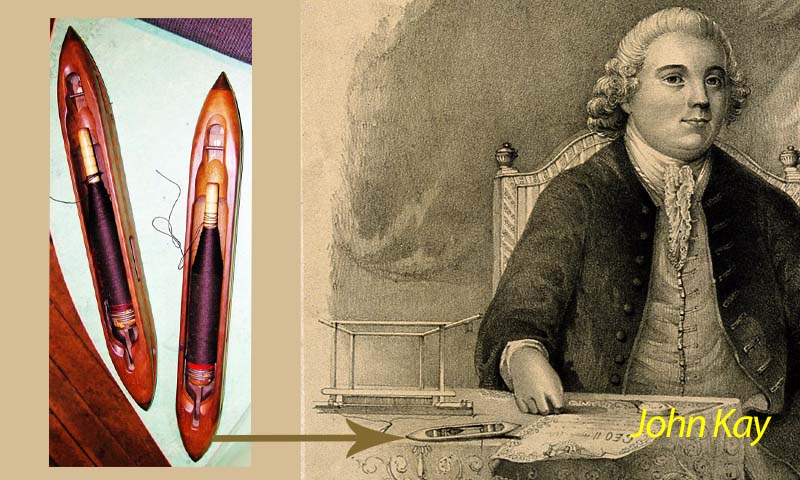
The Flying Shuttle
John Kay (1704-c.80) from Lancashire and one of his six sons, Robert (1728-1802), made vital contributions to the Industrial Revolution in the textile industry. John first invented, manufactured and installed wire reeds for looms. He later developed a card-making machine and a cording and twisting machine for yarn. In 1733 he invented the flying shuttle, the first step from hand looms to power looms.
His mechanism comprised a wheeled, aerodynamic bobbin tray ferrying the weft to and fro inside the warp ‘shed’ and operated by pulling on a cord attached to the hammers that whacked the tray along a ‘race’. A weaver could do this with one hand while simultaneously operating the reeds. This was far quicker than doing the job manually and enabled the production of much wider cloth.
Some newly laid-off weavers expressed their resentful and some rival businesses ignored Kay’s patent, which he could not afford to continue defending in court, and copied the idea anyway (patents were not fairly regulated then). However, Robert improved the loom further in 1760 by the addition of a ‘drop box’ to hold extra bobbins so that multi-coloured designs could be woven. In spite of any difficulties, the Kays’ innovations were a turning point.
(Top images LtoR: flying shuttle trays by Linda Spashett at Wikimedia Commons / CC BY 3.0, John Kay [cropped] by Wellcome Collection by Wikimedia Commons / CC BY 4.0)
